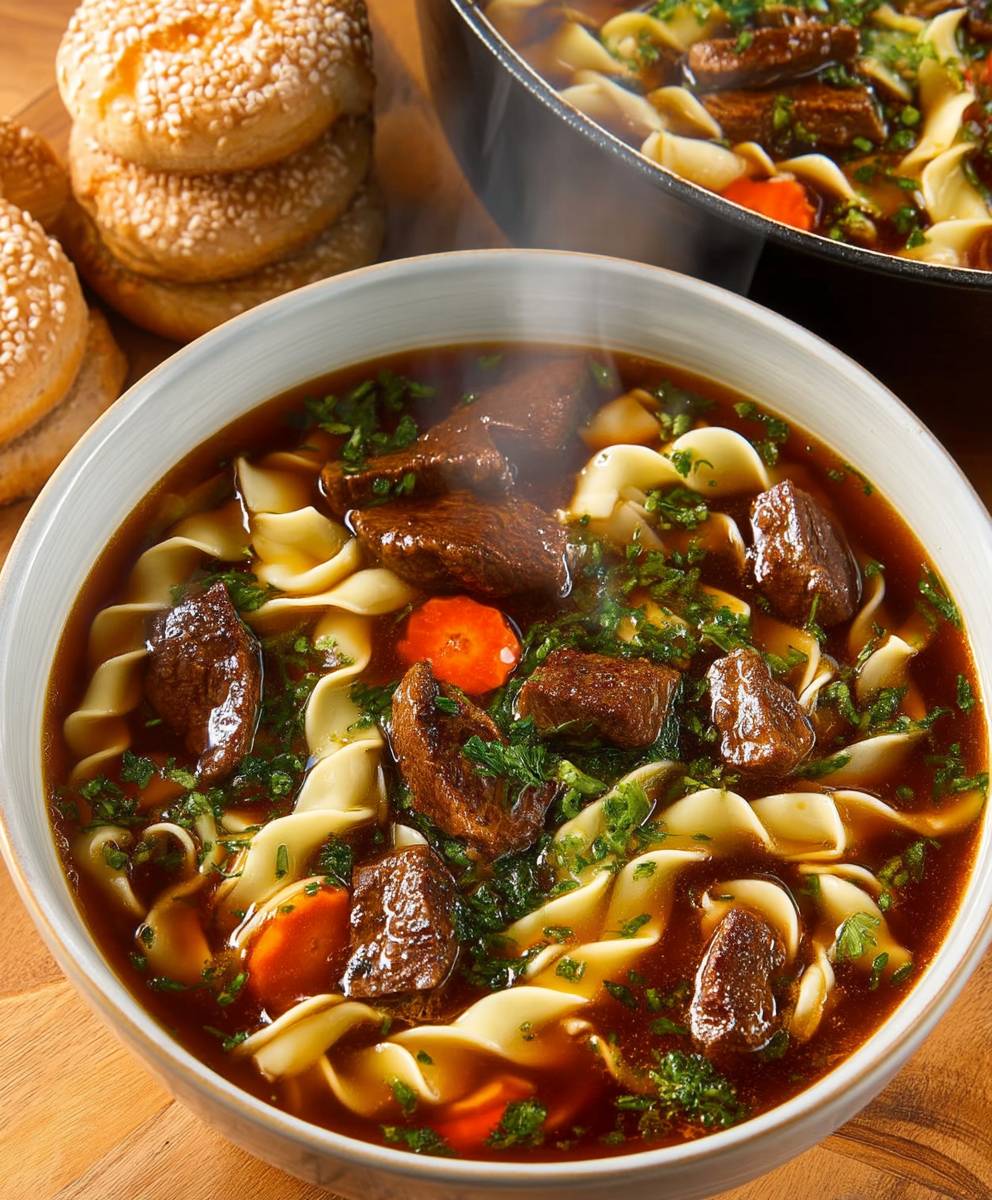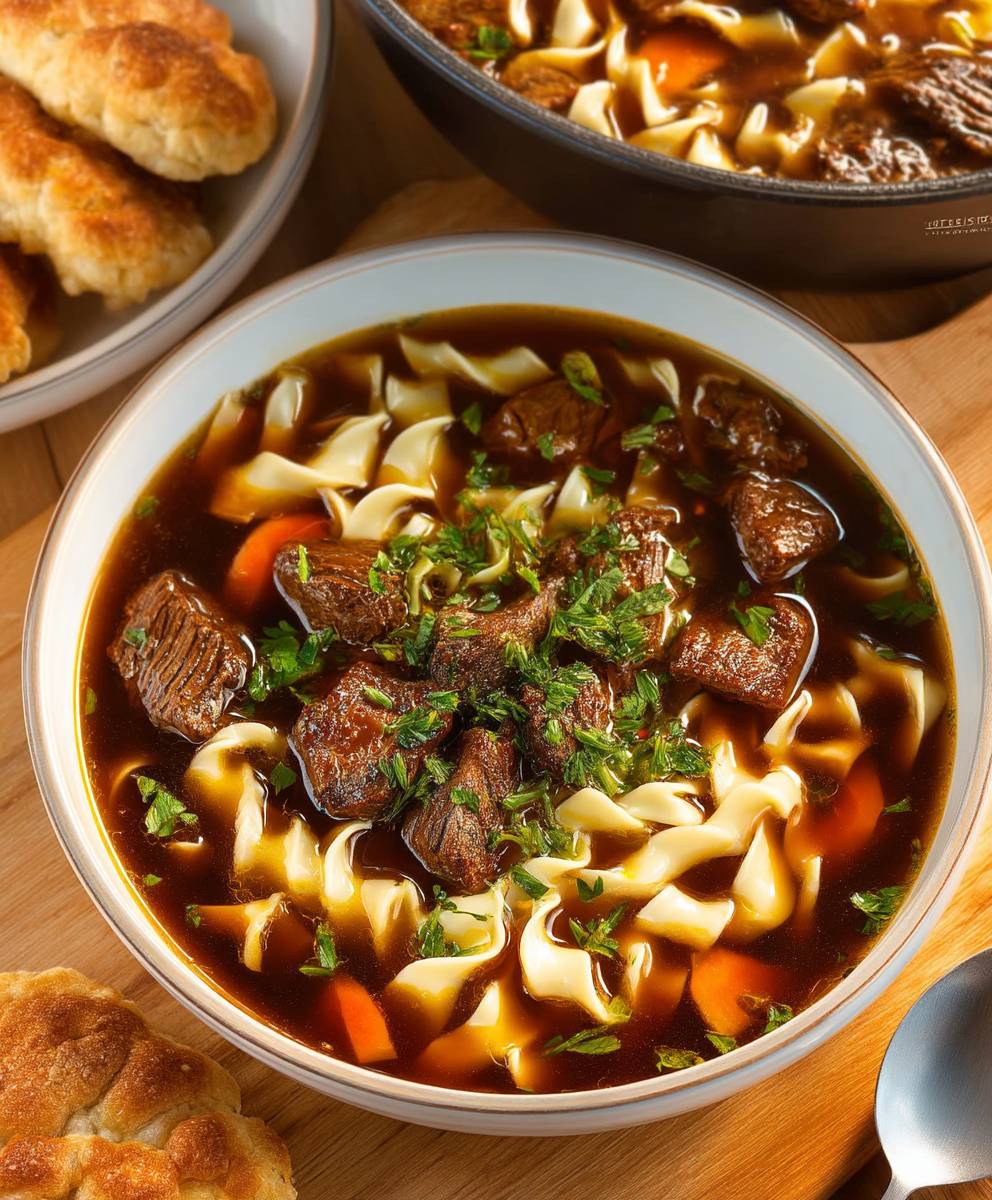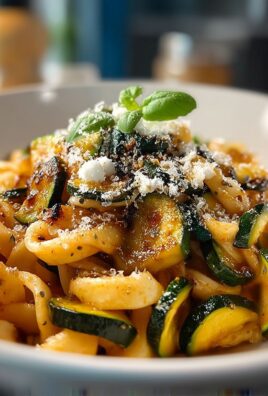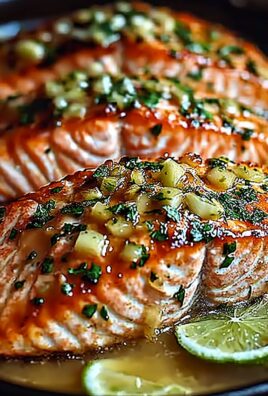Beef Noodle Soup: just the name conjures up images of steaming bowls, tender beef, and slurp-worthy noodles swimming in a rich, savory broth. Have you ever craved a dish that warms you from the inside out, a culinary hug on a chilly day? Well, look no further! This isn’t just any soup; it’s an experience, a journey for your taste buds that will leave you utterly satisfied.
The origins of Beef Noodle Soup are deeply rooted in Chinese culinary history, with variations found across different regions, each boasting its unique twist. While the exact birthplace is debated, its popularity is undeniable, spreading throughout Asia and beyond. It’s a testament to the power of simple ingredients transformed into something truly extraordinary.
What makes this dish so universally loved? It’s the symphony of flavors, the perfect balance of savory, umami, and subtle spices. The tender beef, often braised for hours, melts in your mouth. The noodles, whether thick and chewy or thin and delicate, provide the perfect textural counterpoint. And the broth? Oh, the broth! It’s the heart and soul of the soup, a complex concoction that’s both comforting and invigorating. Plus, it’s a relatively convenient meal to prepare, especially if you make a big batch of broth ahead of time. Trust me, once you try this recipe, you’ll understand why Beef Noodle Soup is a beloved classic around the world.
Ingredients:
- For the Beef:
- 2 lbs beef chuck, cut into 1-inch cubes
- 2 tablespoons vegetable oil
- 1 large onion, roughly chopped
- 4 cloves garlic, minced
- 2-inch piece of ginger, peeled and sliced
- 2 tablespoons doubanjiang (fermented broad bean paste)
- 2 tablespoons soy sauce
- 1 tablespoon dark soy sauce
- 1 tablespoon sugar
- 1 teaspoon five-spice powder
- 8 cups beef broth
- 2 cups water
- 2 star anise
- 1 cinnamon stick
- 2 dried chili peppers (optional)
- Salt to taste
- For the Noodles:
- 1 lb fresh or dried wheat noodles (thick or thin, your preference!)
- For the Toppings:
- 1 cup baby bok choy, chopped
- 1/2 cup scallions, thinly sliced
- 1/4 cup cilantro, chopped
- Lao Gan Ma Chili Crisp (optional, for serving)
- Pickled mustard greens (optional, for serving)
Preparing the Beef:
- Sear the Beef: Heat the vegetable oil in a large, heavy-bottomed pot or Dutch oven over medium-high heat. Working in batches, sear the beef cubes on all sides until nicely browned. This step is crucial for developing a rich, deep flavor. Don’t overcrowd the pot, or the beef will steam instead of sear. Remove the seared beef from the pot and set aside.
- Sauté Aromatics: Add the chopped onion to the pot and cook until softened and slightly translucent, about 5-7 minutes. Add the minced garlic and sliced ginger and cook for another minute until fragrant. Be careful not to burn the garlic.
- Add Doubanjiang and Spices: Stir in the doubanjiang, soy sauce, dark soy sauce, sugar, and five-spice powder. Cook for 1-2 minutes, stirring constantly, until the doubanjiang is fragrant and the spices are well combined. This step helps to bloom the spices and release their flavors.
- Return Beef and Add Liquids: Return the seared beef to the pot. Pour in the beef broth and water. Add the star anise, cinnamon stick, and dried chili peppers (if using). Bring the mixture to a boil.
- Simmer the Beef: Once boiling, reduce the heat to low, cover the pot, and simmer for at least 2-3 hours, or until the beef is incredibly tender and easily shreds with a fork. The longer you simmer, the more flavorful the broth will become. Check the beef periodically and add more water if needed to keep the beef submerged.
- Season to Taste: After simmering, taste the broth and adjust the seasoning with salt as needed. Remember that doubanjiang is already quite salty, so add salt gradually.
- Remove Aromatics: Remove the star anise, cinnamon stick, and dried chili peppers from the broth before serving. These have imparted their flavor and are no longer needed.
Cooking the Noodles and Assembling the Soup:
- Cook the Noodles: While the beef is simmering, prepare the noodles according to the package directions. Fresh noodles usually cook very quickly, while dried noodles may take a bit longer. Cook the noodles until they are al dente, meaning they are cooked through but still have a slight bite.
- Prepare the Toppings: Chop the baby bok choy, scallions, and cilantro. Have these ready to go for topping the soup.
- Assemble the Soup: Divide the cooked noodles among bowls. Ladle the beef and broth over the noodles. Top with the chopped baby bok choy, scallions, and cilantro.
- Serve: Serve immediately and enjoy! Offer Lao Gan Ma Chili Crisp and pickled mustard greens on the side for those who want to add extra flavor and heat.
Tips and Variations:
- Beef Selection: Beef chuck is ideal for this recipe because it has a good amount of marbling, which renders down during the long simmering process and adds richness to the broth. You can also use beef brisket or short ribs.
- Doubanjiang Substitute: If you can’t find doubanjiang, you can substitute it with gochujang (Korean chili paste), but the flavor will be slightly different. You may also need to adjust the amount of salt you add.
- Spice Level: Adjust the amount of dried chili peppers to your liking. For a milder soup, omit them altogether.
- Vegetable Additions: Feel free to add other vegetables to the soup, such as carrots, daikon radish, or mushrooms. Add them to the pot during the last hour of simmering.
- Noodle Types: Experiment with different types of noodles. Udon noodles, ramen noodles, or even egg noodles would all work well in this soup.
- Slow Cooker Method: You can also make this soup in a slow cooker. Sear the beef and sauté the aromatics as directed, then transfer everything to the slow cooker. Cook on low for 6-8 hours, or on high for 3-4 hours.
- Pressure Cooker Method: For a faster version, use a pressure cooker or Instant Pot. Sear the beef and sauté the aromatics as directed, then transfer everything to the pressure cooker. Cook on high pressure for 45 minutes, followed by a natural pressure release.
- Make Ahead: The beef stew portion of this recipe can be made ahead of time and stored in the refrigerator for up to 3 days. The flavors will actually improve over time. Reheat the stew before adding the noodles and toppings.
- Freezing: The beef stew can also be frozen for up to 2 months. Thaw it completely before reheating. It’s best to cook the noodles fresh when you’re ready to serve the soup.
Detailed Explanation of Key Ingredients:
Beef Chuck:
The star of the show! Beef chuck is a cut from the shoulder of the cow. It’s known for its rich flavor and generous marbling. This marbling is key because as it cooks low and slow, the fat renders, making the beef incredibly tender and adding depth to the broth. Don’t skimp on the quality of your beef; it makes a huge difference.
Doubanjiang (Fermented Broad Bean Paste):
This is a crucial ingredient for authentic Taiwanese beef noodle soup. Doubanjiang is a salty, savory, and slightly spicy paste made from fermented broad beans, chili peppers, and salt. It adds a complex umami flavor that you just can’t replicate with other ingredients. You can usually find it at Asian grocery stores. Look for the Pixian Doubanjiang brand, which is considered the best.
Soy Sauce and Dark Soy Sauce:
Soy sauce adds saltiness and umami to the broth. Dark soy sauce is thicker and sweeter than regular soy sauce. It’s used primarily for color, giving the broth a rich, dark hue. If you don’t have dark soy sauce, you can substitute it with a tablespoon of molasses or brown sugar mixed with regular soy sauce.
Five-Spice Powder:
This is a blend of five spices, typically star anise, cloves, cinnamon, Sichuan peppercorns, and fennel seeds. It adds a warm, aromatic flavor to the soup. You can find five-spice powder at most grocery stores.
Star Anise and Cinnamon Stick:
These whole spices add a subtle sweetness and warmth to the broth. They infuse the broth with their flavor during the long simmering process. Be sure to remove them before serving.
Lao Gan Ma Chili Crisp:
This is an optional topping, but I highly recommend it! Lao Gan Ma Chili Crisp is a crunchy, savory, and slightly spicy chili oil that adds a wonderful texture and flavor to the soup. It’s made with crispy chili flakes, peanuts, and other seasonings. You can find it at most Asian grocery stores.
Pickled Mustard Greens:
Another optional topping, pickled mustard greens add a tangy and slightly sour flavor that complements the richness of the beef and broth. You can find them at most Asian grocery stores.
Troubleshooting:
Broth is Too Salty:
If your broth is too salty, you can add a little bit of water or a pinch of sugar to balance the flavors. You can also add a peeled potato to the broth while it simmers. The potato will absorb some of the salt.
Broth is Not Flavorful Enough:
If your broth is not flavorful enough

Conclusion:
This isn’t just another soup recipe; it’s a culinary journey to comfort and flavor, and that’s why this Beef Noodle Soup is an absolute must-try. From the rich, deeply savory broth to the tender, melt-in-your-mouth beef and perfectly cooked noodles, every element works in harmony to create a truly unforgettable experience. I know, I know, I’m biased, but trust me on this one! You’ll be thanking me later.
But beyond the incredible taste, this recipe is about more than just satisfying your hunger. It’s about creating a warm, inviting atmosphere in your kitchen, filling your home with the aroma of simmering goodness, and sharing a delicious meal with the people you love. Its the kind of dish that evokes memories and creates new ones. And let’s be honest, who doesn’t need a little more of that in their lives?
Serving Suggestions and Variations:
Now, let’s talk about how you can make this Beef Noodle Soup your own. While the recipe as written is pretty darn perfect (if I do say so myself!), there’s always room for a little personalization.
* Spice it up! If you’re a fan of heat, add a pinch of red pepper flakes or a drizzle of chili oil to your bowl before serving. A dash of sriracha also works wonders.
* Veggie Power: Feel free to add more vegetables to the soup. Sliced mushrooms, bok choy, or even some chopped spinach would be delicious additions. Just toss them in during the last 15 minutes of cooking time.
* Noodle Nirvana: While I’ve specified egg noodles in the recipe, you can certainly experiment with other types of noodles. Rice noodles, udon noodles, or even ramen noodles would all be fantastic choices. Just adjust the cooking time accordingly.
* Garnish Galore: Don’t underestimate the power of a good garnish! A sprinkle of fresh cilantro, chopped green onions, or a squeeze of lime juice can really elevate the flavors of the soup.
* Make it ahead: This soup is even better the next day! The flavors meld together beautifully overnight. Just store it in an airtight container in the refrigerator and reheat it gently before serving.
* Protein Power: While beef is the star of the show, you could also use other types of protein, such as chicken or pork. Just adjust the cooking time accordingly.
I truly believe that this Beef Noodle Soup recipe is a winner. It’s comforting, flavorful, and relatively easy to make. It’s the perfect dish for a chilly evening, a cozy weekend lunch, or any time you’re craving a hearty and satisfying meal.
So, what are you waiting for? Grab your apron, gather your ingredients, and get cooking! I promise you won’t be disappointed. And most importantly, don’t be afraid to experiment and make it your own. Cooking should be fun, so relax, enjoy the process, and let your creativity shine.
Once you’ve tried this recipe, I’d absolutely love to hear about your experience. Did you make any modifications? What did you think of the flavor? What did your family and friends think? Share your thoughts and photos in the comments below! I can’t wait to see what you create. Happy cooking!
Beef Noodle Soup: The Ultimate Guide to Making It at Home
Comforting Taiwanese Beef Noodle Soup with tender braised beef, rich broth, and chewy noodles, topped with fresh greens and optional chili crisp.
Ingredients
- 2 lbs beef chuck, cut into 1-inch cubes
- 2 tablespoons vegetable oil
- 1 large onion, roughly chopped
- 4 cloves garlic, minced
- 2-inch piece of ginger, peeled and sliced
- 2 tablespoons doubanjiang (fermented broad bean paste)
- 2 tablespoons soy sauce
- 1 tablespoon dark soy sauce
- 1 tablespoon sugar
- 1 teaspoon five-spice powder
- 8 cups beef broth
- 2 cups water
- 2 star anise
- 1 cinnamon stick
- 2 dried chili peppers (optional)
- Salt to taste
- 1 lb fresh or dried wheat noodles (thick or thin, your preference!)
- 1 cup baby bok choy, chopped
- 1/2 cup scallions, thinly sliced
- 1/4 cup cilantro, chopped
- Lao Gan Ma Chili Crisp (optional, for serving)
- Pickled mustard greens (optional, for serving)
Instructions
- Heat the vegetable oil in a large, heavy-bottomed pot or Dutch oven over medium-high heat. Working in batches, sear the beef cubes on all sides until nicely browned. Remove the seared beef from the pot and set aside.
- Add the chopped onion to the pot and cook until softened and slightly translucent, about 5-7 minutes. Add the minced garlic and sliced ginger and cook for another minute until fragrant.
- Stir in the doubanjiang, soy sauce, dark soy sauce, sugar, and five-spice powder. Cook for 1-2 minutes, stirring constantly, until the doubanjiang is fragrant and the spices are well combined.
- Return the seared beef to the pot. Pour in the beef broth and water. Add the star anise, cinnamon stick, and dried chili peppers (if using). Bring the mixture to a boil.
- Once boiling, reduce the heat to low, cover the pot, and simmer for at least 2-3 hours, or until the beef is incredibly tender and easily shreds with a fork. Check the beef periodically and add more water if needed to keep the beef submerged.
- After simmering, taste the broth and adjust the seasoning with salt as needed. Remember that doubanjiang is already quite salty, so add salt gradually.
- Remove the star anise, cinnamon stick, and dried chili peppers from the broth before serving.
- While the beef is simmering, prepare the noodles according to the package directions. Cook the noodles until they are al dente.
- Chop the baby bok choy, scallions, and cilantro.
- Divide the cooked noodles among bowls. Ladle the beef and broth over the noodles. Top with the chopped baby bok choy, scallions, and cilantro.
- Serve immediately and enjoy! Offer Lao Gan Ma Chili Crisp and pickled mustard greens on the side for those who want to add extra flavor and heat.
Notes
- Beef chuck is ideal, but beef brisket or short ribs can also be used.
- If you can’t find doubanjiang, you can substitute it with gochujang (Korean chili paste).
- Adjust the amount of dried chili peppers to your liking.
- Feel free to add other vegetables to the soup, such as carrots, daikon radish, or mushrooms. Add them to the pot during the last hour of simmering.
- Experiment with different types of noodles. Udon noodles, ramen noodles, or even egg noodles would all work well in this soup.
- Slow Cooker Method: Sear the beef and sauté the aromatics as directed, then transfer everything to the slow cooker. Cook on low for 6-8 hours, or on high for 3-4 hours.
- Pressure Cooker Method: Sear the beef and sauté the aromatics as directed, then transfer everything to the pressure cooker. Cook on high pressure for 45 minutes, followed by a natural pressure release.
- The beef stew portion of this recipe can be made ahead of time and stored in the refrigerator for up to 3 days or frozen for up to 2 months.





Leave a Comment